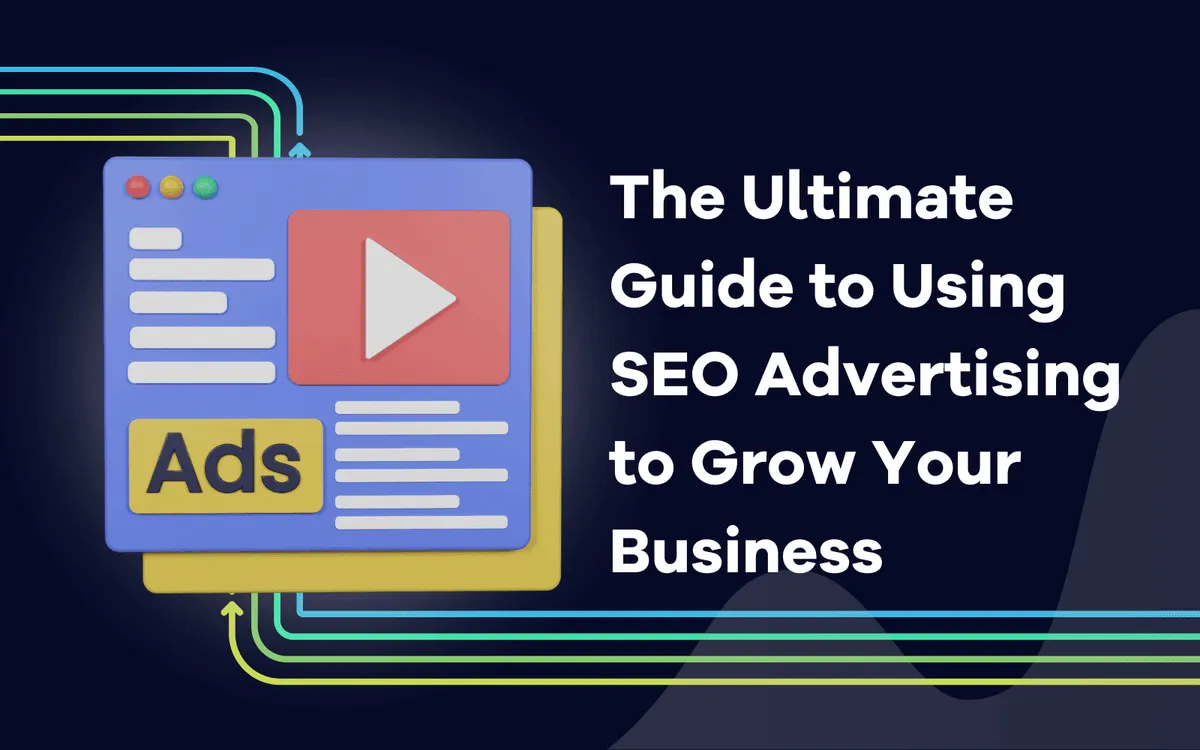
The Ultimate Guide to Using SEO Advertising to Grow Your Business

Ayush Koul
September 13, 2023
Unlock the power of SEO advertising with our comprehensive guide! Learn proven strategies to supercharge your business growth through effective SEO advertising techniques.
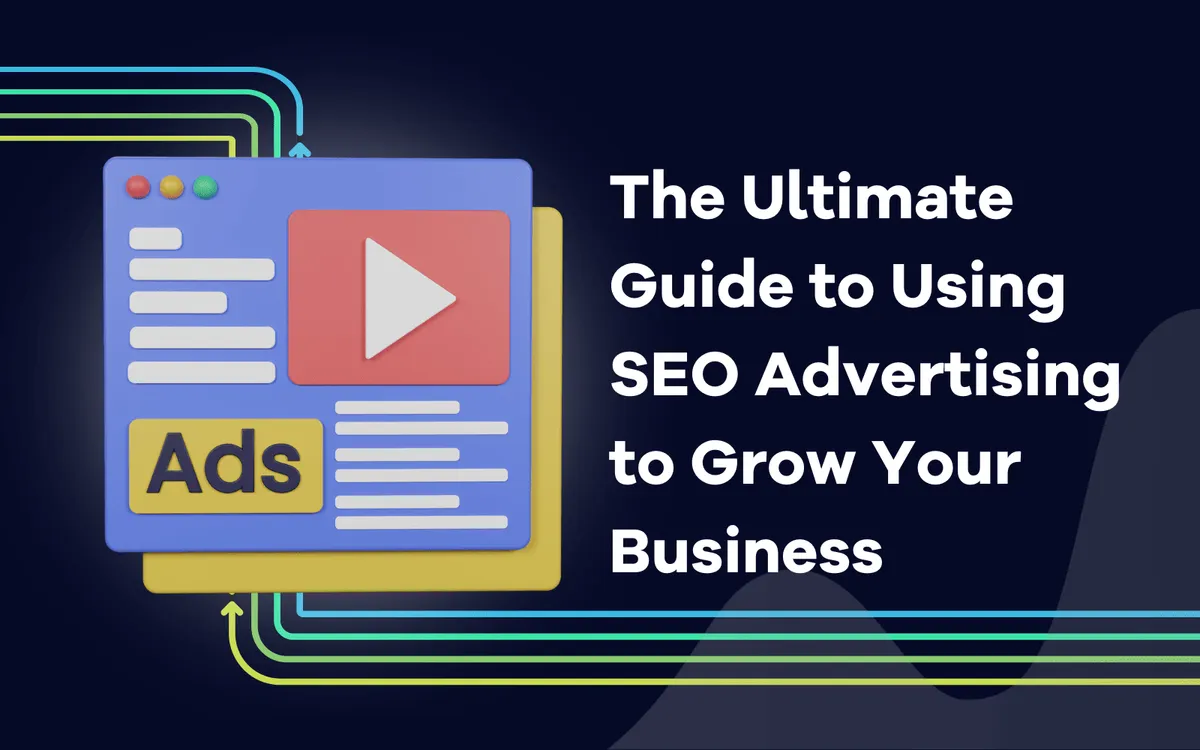
The current digital landscape demands the right use of SEO advertising if a business wants exponential growth and proper visibility. Through SEO advertising, businesses can expect maximum ROI through increased traffic and conversions.
SEO advertising aims to achieve more visibility on SERPs (search engine results pages) through the combined use of sponsored placements and unpaid ranking techniques. Simply put, SEO advertising combines organic SEO techniques with paid ads to boost online visibility, engage users, and drive growth.
In this ultimate guide, we will walk you through the essential steps and best practices for using SEO advertising to grow your business.
Understanding SEO Advertising
SEO advertising is a holistic approach involving a comprehensive strategy combining organic methods and paid advertising to enhance the online presence and boost traffic. It includes techniques such as keyword research, on-page SEO optimization, technical and local SEO, content marketing, content creation, PPC, UX, social media integration, etc.
A business can more effectively cater to its target audience through niche-driven SEO advertising by strategically targeting specific demographics. It also enhances the chances of attracting potential customers and growing business reach.
Elements of SEO Advertising
Here are some crucial elements of SEO advertising that your business can leverage to achieve the desired goals:
Keyword research
A vital element of an SEO advertising strategy is keyword research. This step involves researching and identifying relevant keywords or phrases. These keywords or phrases should be the ones that your ideal customers are likely to use when they search for your products or services.
Numerous tools can help you find the right keyword for your business. Some popular keyword research tools are Google Keyword Planner, SEMrush, and Ahref. These tools are beneficial since they provide search volume and competition data. Businesses can use the data from keyword research tools and determine their strategy to target their audience.
On-Page optimization
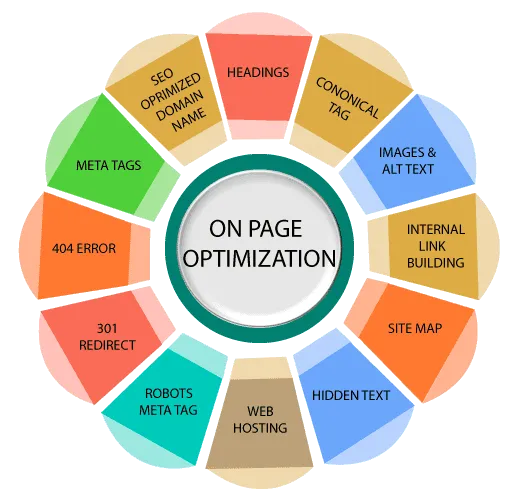 Source: Javapoint
Source: JavapointOn-page optimization is a strategy that involves optimizing your website’s on-page elements to align with your chosen keywords. This would allow the search engines to discover your pages easily in response to the search query.
For example, if your business sells fitness equipment, on-page optimization would involve creating a product page for "dumbbells" that has a descriptive title tag ("High-Quality Dumbbells for Effective Workouts") and engaging content detailing the benefits of your dumbbells.
By including relevant keywords and optimizing various on-page elements, your page becomes more likely to appear in search results when users search for terms related to dumbbells.
Here is how you can get started with on-page optimization:
Title tags and meta descriptions
It includes crafting compelling and keyword-rich title tags and meta descriptions that accurately reflect the page's content. It entices users to click from the search results.
Keyword usage
You must strategically incorporate relevant keywords into the page's headings, subheadings, and body content to signal its relevance to search engines.
Content quality
Focus on creating high-quality content. It should be informative and engaging, provide value to readers, and encourage longer time spent on the page.
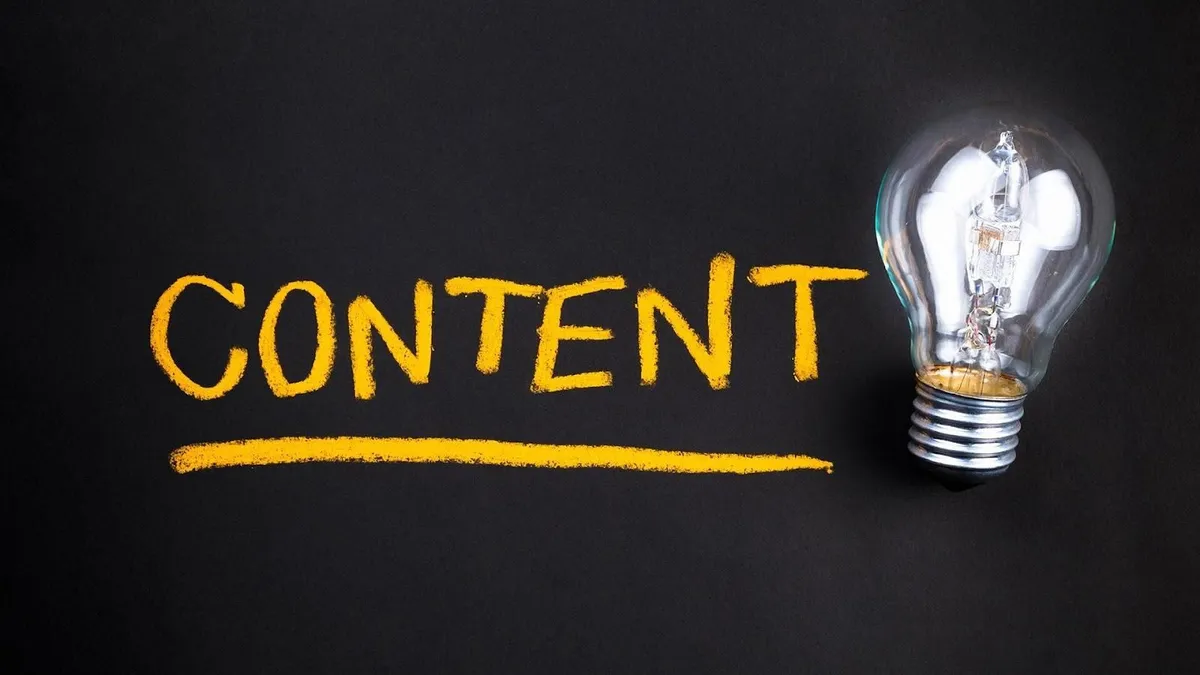 Source: Searchengineland
Source: SearchenginelandTo create high-quality content, use the right image, video, infographic, etc., at the right places in your content.
Header tags
Header tags such as H1, H2, H3, etc., are important as they help you keep your data structured. You must use these tags as they make it easier for users and search engines to understand the information hierarchy.
URL structure
You must create a clean and descriptive URL. It should include relevant keywords and should reflect what the page is about. For instance, if your page is about a video platform for education, you can use the URL as video-platform-education.
Internal linking
Internal linking is very important for increased visibility and time spent on the website. Linking to other relevant pages within your website to guide users to related content and distribute authority throughout the site.
Image optimization
Optimize your images with descriptive alt text and proper file names. It would improve accessibility and provide additional context to search engines.
Mobile-Friendly design
Ensuring the page is responsive and displays correctly on various devices, as mobile-friendliness is crucial in search rankings. Make sure that you use a mobile-friendly design for your website.
Page load speed
Your website’s load speed is important for a better user experience. Ensure your web pages do not take too long to load.
Schema markup
Implement schema markup to provide search engines with additional context about the content. It will lead to enhanced rich snippets in search results.
Social sharing
Includes social sharing buttons or options to encourage users to share your content. It would potentially increase the reach and visibility.
Technical SEO
Technical SEO is another vital aspect of SEO advertising, contributing to better search engine rankings and a smoother user experience. Here are some important elements of technical SEO:
Secure connection (HTTPS)
Search engines favor secure websites. Use an SSL certificate to encrypt data transmitted between users and your website.
XML Sitemap
Create and submit an XML sitemap to search engines to help them understand the structure and organization of your website's content.
Robots.txt
Implement a robots.txt file to guide search engine bots on which parts of your site to crawl and which to avoid.
Canonicalization
Use canonical tags to indicate the preferred version of a web page when multiple versions with similar content exist.
404 Error Handling
Customize error pages to provide helpful information to users when they encounter broken links or missing pages.
301 Redirects
Redirect old or broken URLs to relevant and functioning pages to maintain link equity and prevent users from landing on error pages.
Site Architecture
Design a clear and organized site structure that allows users and search engines to navigate easily.
Local SEO
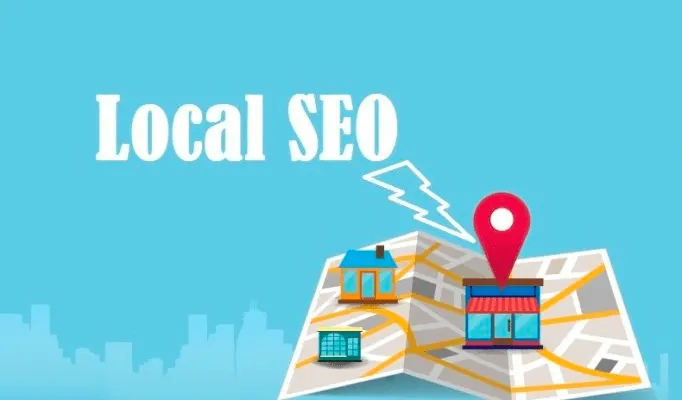 Source: Technologynews24x7
Source: Technologynews24x7Local SEO focuses on increasing the visibility of businesses with a physical presence. Establishing a multilingual web presence is challenging. A website's multilingual optimization is done through search engine optimization. You have a lot on your plate, from localizing social media and advertising to translating websites. Things are more difficult when you want to improve SEO of your multilingual website. It involves more than only interpreting text. Additionally, SEO localization considers the information-seeking habits and keyphrases of the target market. Increase your organic reach in those places by using these location-based keywords in your content. Here is what local SEO includes:
Google My Business
Creating and optimizing your Google My Business listing with accurate business information, including name, address, phone number (NAP), business hours, website link, and photos.
Local citations
Ensuring your business is listed accurately in online directories, local business listings, and industry-specific platforms and surveys.
Online reviews and ratings
Encouraging positive reviews from satisfied customers on platforms like Google, Yelp, and TripAdvisor. Responding to positive and negative reviews shows engagement and builds trust.
Localized keywords
Incorporating local keywords in your website's content, meta tags, and descriptions to help your site appear in local searches.
Geotagging images
Adding location metadata to images on your website can help search engines understand the geographical relevance of your content.
Location pages
Creating dedicated pages for each of your business locations (if applicable), providing specific information about each location.
Local social media engagement
Engaging with local audiences on social media platforms and joining local groups or forums.
Map embedding and ranking
Embedding maps and ranking higher with your location on your website can be helpful for users trying to find your physical address.
Link building
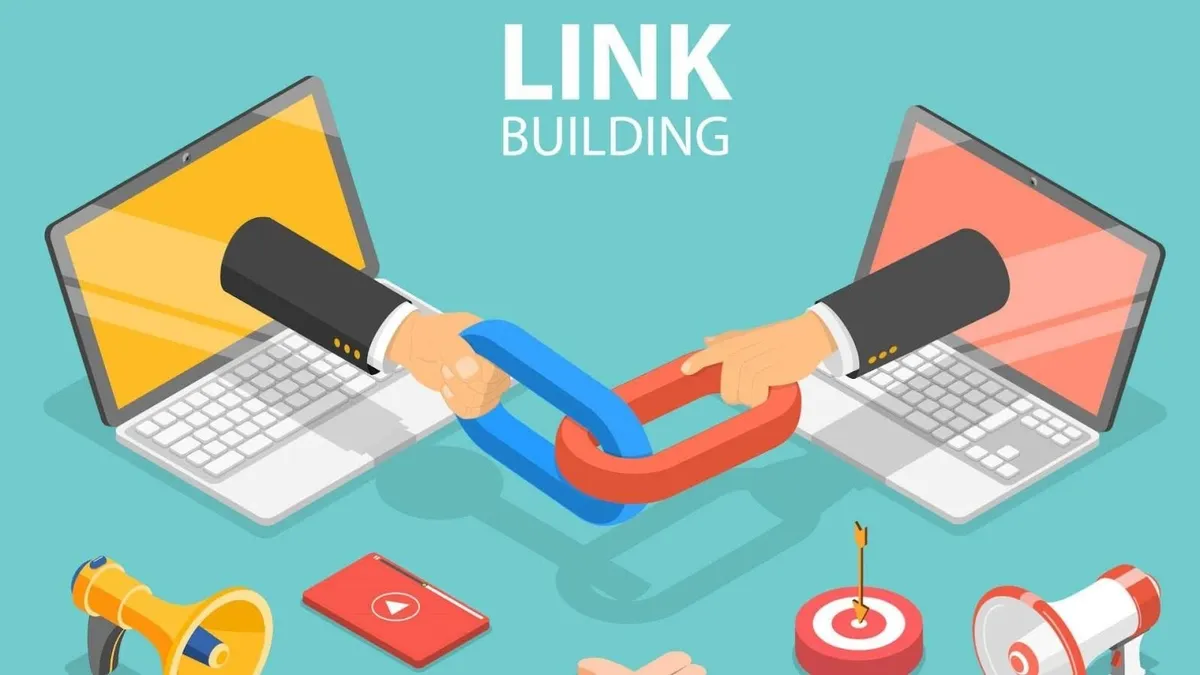 Source: Publir
Source: PublirAnother important element of SEO advertising is link building. It includes earning high-quality backlinks from authoritative and relevant sources. You can gain high-quality backlinks through guest posting, content outreach, and influencer partnerships. You can use recruitment software to find the right candidate for link building if you need expertise.
Paid Advertising (PPC)
PPC is crucial to SEO advertising as it helps businesses pair their organic efforts with paid ones to achieve the desired goals. Here are some popular PPC tools:
Google Ads
Create targeted campaigns using Google Ads to appear at the top of search results for specific keywords.
Keyword research
Conduct thorough keyword research for your paid campaigns to reach the right audience.
Ad copy and landing pages
Craft compelling ad copy and design relevant landing pages matching user intent and driving conversions.
Analytics and Tracking
Tracking and analyzing the performance of your SEO advertising helps to maintain the course of efforts in the right direction. Here are some popular tools for analyzing and tracking the SEO-advertising efforts:
Google Analytics
Track website traffic, user behavior, and conversion metrics to evaluate the effectiveness of your strategies.
Conversion tracking
Set up conversion tracking to measure the success of your paid campaigns.
Final Words
Combining the power of SEO and advertising can create a synergistic approach that drives organic and paid website traffic. Keep refining your strategies based on data insights, industry trends, and user behavior to achieve sustained growth for your business.
Related blog posts
The Hidden Flaws in Search Volumes and How to Solve Them
Learn how AI Search Volume delivers reliable search volumes by combining GKP, GSC, and Trends so that you can prioritize the right keywords.
1 July 2025
AI Overviews Are Taking Over SERPs
From traffic drops to decreasing CTRs, AI Overviews are shaking up SEO. Learn what is happening and how AccuRanker helps you track AIO.
25 June 2025
How AccuRanker’s AI Models Fix Inaccurate SEO Data
Struggling with unreliable SEO data? Discover how AccuRanker’s CTR, Search Intent, Search Volume, and Share of Voice deliver accurate insights.
1 June 2025




